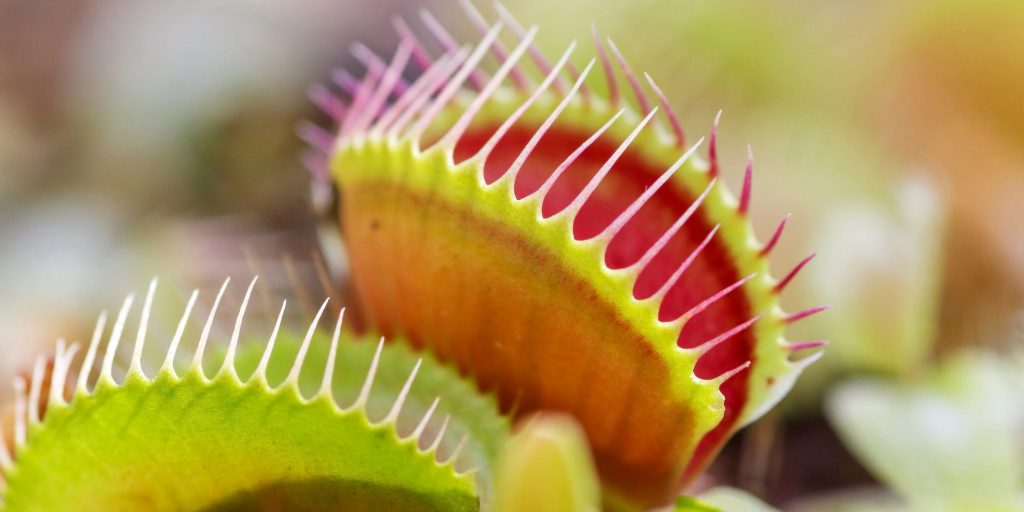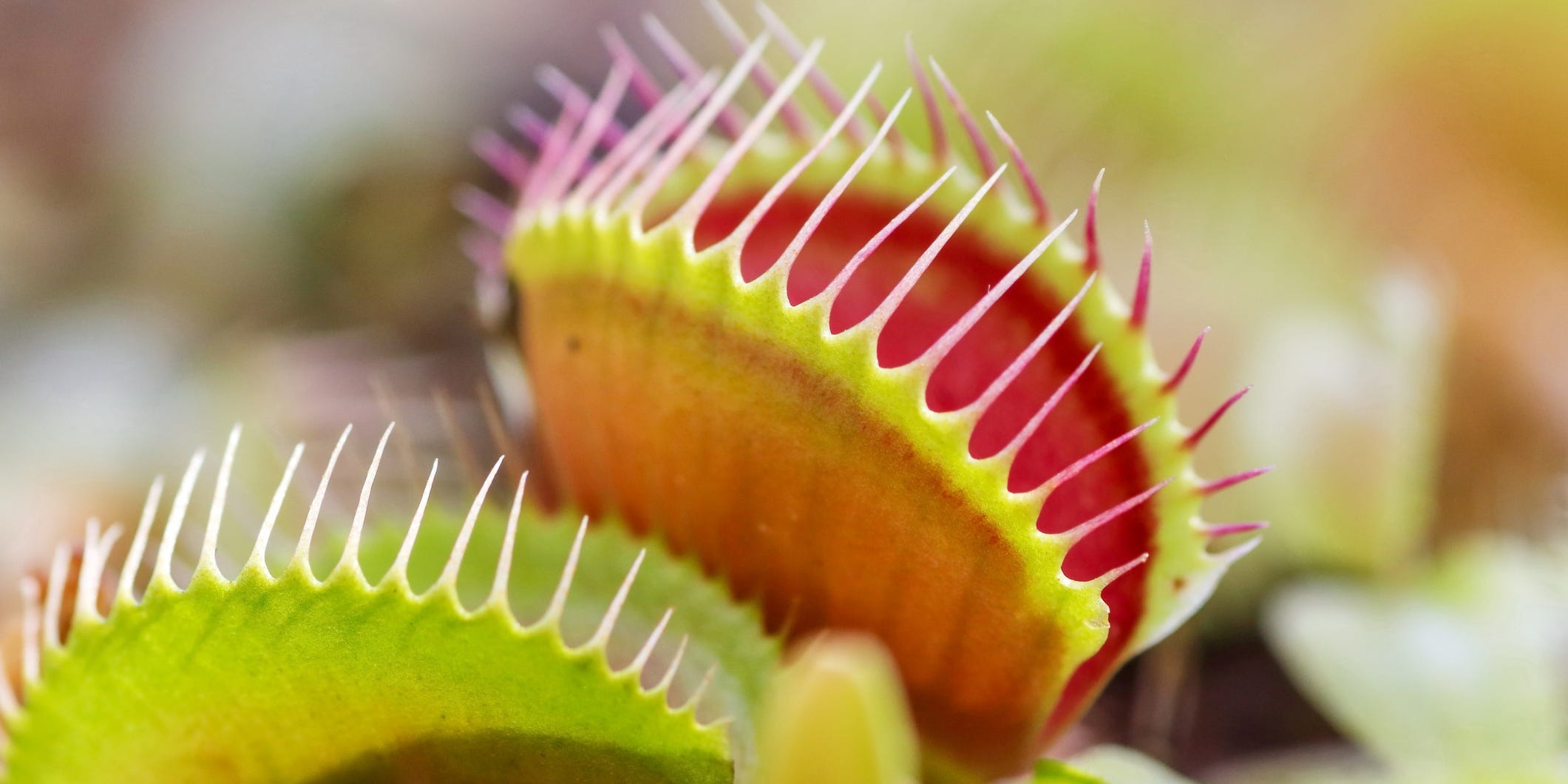
baphotte/Getty Images
- Venus flytraps are carnivorous plants, and feed on live insects such as flies and spiders.
- While Venus flytraps can be grown indoors, they thrive outdoors in temperate climates.
- Venus flytraps prefer nutrient-poor soil and staying consistently moist.
- Visit Insider's Home & Kitchen Reference library for more stories.
As the most well-known carnivorous plant, the Venus flytrap (Dionaea muscipula) is a unique, delicate, and interesting houseplant with a specific care routine. Unlike other plants, carnivorous plants require supplemental feeding in the form of small live critters such as flies, spiders, and wasps.
Daniela Ribbecke, carnivorous plant expert at California Carnivores, shares tips and facts about the hungry Venus flytrap so you can feel confident caring for yours.
Identifying a Venus flytrap
The Venus flytrap is distinguished by its clusters of half-moon-shaped leaves lined with eyelash-like teeth called cilia. These leaves open up to show a reddish inner surface laced with sweet nectar that lures insects. They're covered with small "trigger hairs." These cause the leaves to snap shut, interlocking the cilia, and trapping its prey.
Feeding
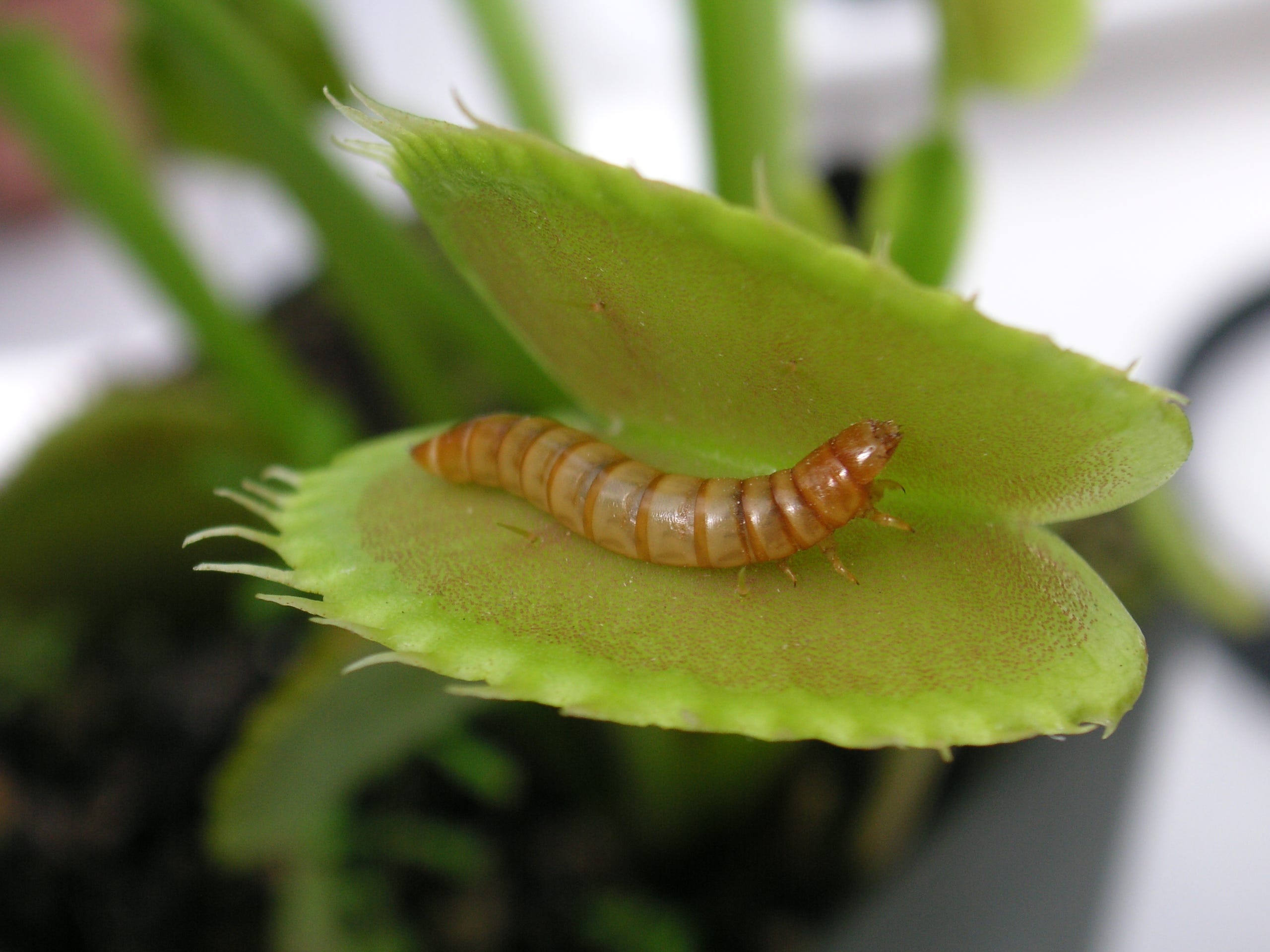
Beatrice Murch/Getty Images
You might be used to feeding your houseplants by fertilizing them, but Venus flytraps require a more pet-like care with regular insect and arachnid feedings. Outdoors, your Venus flytrap will eat live critters such as flies, wasps, spiders, grasshoppers, and even slugs.
"If you feed a Venus flytrap something inert, it is unlikely to digest properly and will often pop open again after a day without absorbing any nutrients," says Ribbecke. "It requires the movement of the live bug to stimulate digestion. If grown inside, you can supplement them by feeding one live mealworm to just one trap, once a week."
If you're unsure if your Venus flytrap is eating and digesting its prey, Ribbecke suggests keeping a close eye on your plant and observing its feeding habits.
"When an insect triggers two hairs or one hair twice, like the double click of a mouse, within 20 seconds, the trap is triggered to rapidly close around the prey," says Ribbecke. "As the insect wiggles in the closed trap, the plant will release digestive acids and enzymes to liquefy the insect. In 4-10 days the trap will reopen and only the exoskeleton will remain, which may lure in another predatory bug, thinking it has an easy meal!"
Water
Venus flytraps are bog plants, meaning they are semiaquatic and naturally grow in or around a wetland. Because of this, Ribbecke says, flytraps always want to be sitting in a saucer of two to three inches of water to mimic their swamp origins. Ensure that the pot your flytrap is in has a drainage hole before placing it in the saucer.
"One big trick to successfully growing carnivorous plants is water quality," says Ribbecke. "They require distilled or reverse osmosis or rainwater. These types of water have little to no dissolved salts and minerals which, when built up in the soil, will kill a carnivorous plant."
It's important to keep your Venus flytrap consistently moist - never soggy and never dried out. Avoid flooding the traps and change the water in the saucer regularly. To prevent root rot, take the potted plant out of the saucer for a few hours daily.
Potting and fertilizer
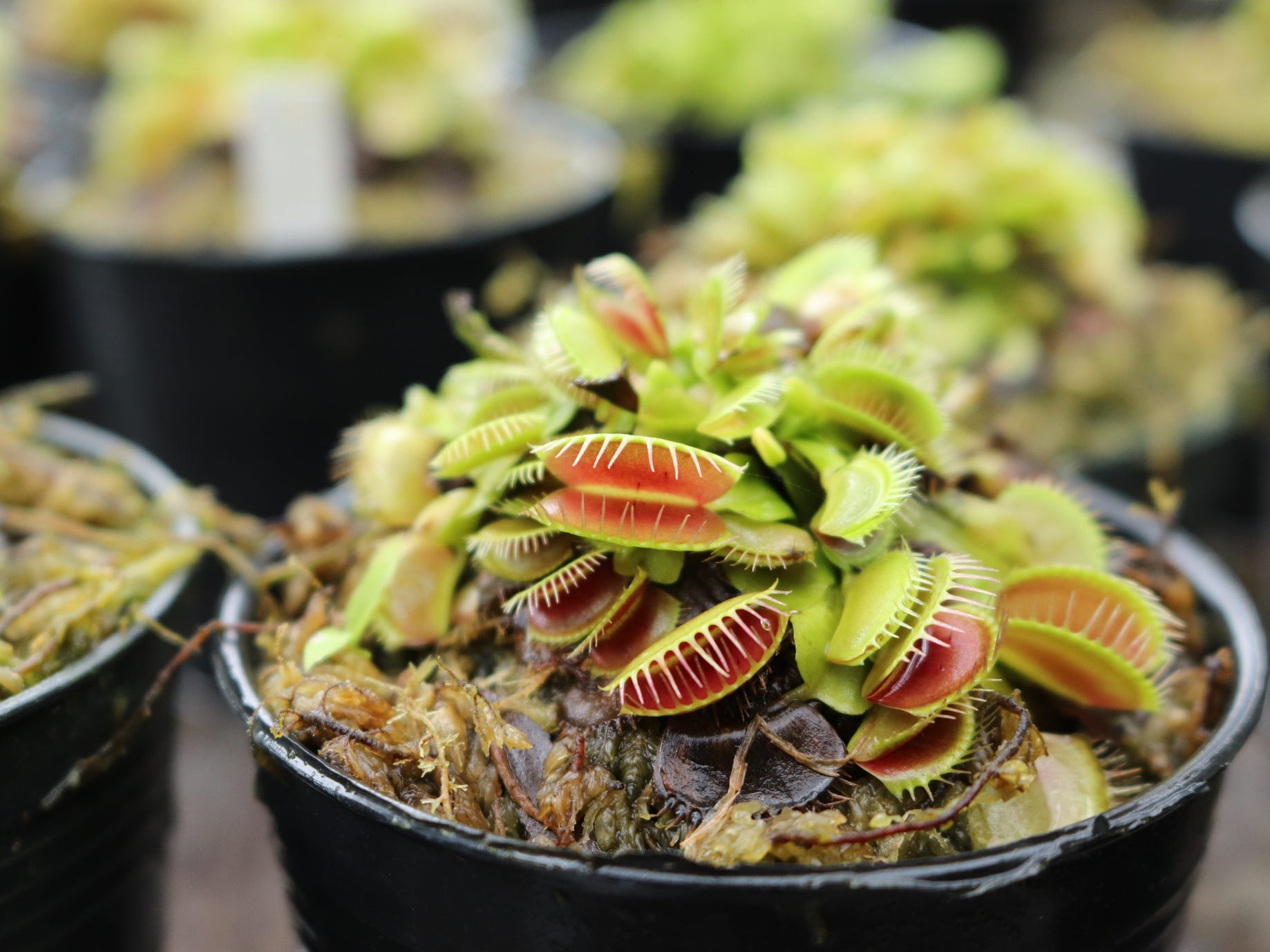
Chanyanuch Duangkaew / EyeEm/Getty Images
Fertilizing your houseplants is usually a must in their growing seasons, but Venus flytraps and other carnivorous plants grow and thrive from their specific feedings and types of soil.
"Carnivorous plants evolved to trap bugs to get the nutrients they needed, like nitrogen, meaning they require nutrient-poor soils like peat moss," says Ribbecke.
A soil mixture of one part peat moss and one part perlite will provide good aeration and drainage for your Venus flytrap. Repot your plant once a year to promote strong roots, and never use traditional houseplant potting mix or fertilizer.
Temperature and light
Despite their wispy appearance, Venus flytraps are hardy plants that can survive in temperatures as low as 20 degrees Fahrenheit and as high as 110 for brief periods. Ribbecke also reminds the importance of a winter dormancy period.
"These are temperate plants that need to be exposed to temperatures of 50s and 60s in the winter," says Ribbecke. "If you live in an area that is regularly over 90, it would be best to protect your flytraps from the full intensity of the afternoon sun and I would recommend growing them in full morning sun only."
Because of their place of origin, Venus flytraps enjoy growing outdoors, where feeding comes naturally and full sunlight is plenty. To grow your flytrap indoors, Ribbecke recommends a grow light set to a 12 hour day length, placed about 6 to 10 inches above the plant.
"Venus flytraps are found only in the coastal plain of southeastern North Carolina and extreme northeastern South Carolina," says Ribbecke. "Many are surprised to learn that these are not tropical plants and they actually do best outdoors if possible with full sun, good airflow, and access to lots of live prey."
Common problems
The Venus flytrap's carnivorous nature might lead to assumptions that it will eat just about any bug. However, some insects and pests can actually be harmful to your plant.
"Carnivorous plants, unfortunately, cannot eat bugs like mites, thrips, aphids, or mealy bugs," says Ribbecke. "Venus flytraps are most likely to be attacked by mites or aphids, which love fresh spring growth." Ribbecke recommends Take Down Garden Spray for aphids, and a miticide for mites.
To prevent common pests and diseases, keep your flytrap's soil at a consistent moisture level, never soggy, and make sure it gets plenty of sunlight.
Should I let my Venus flytrap flower?
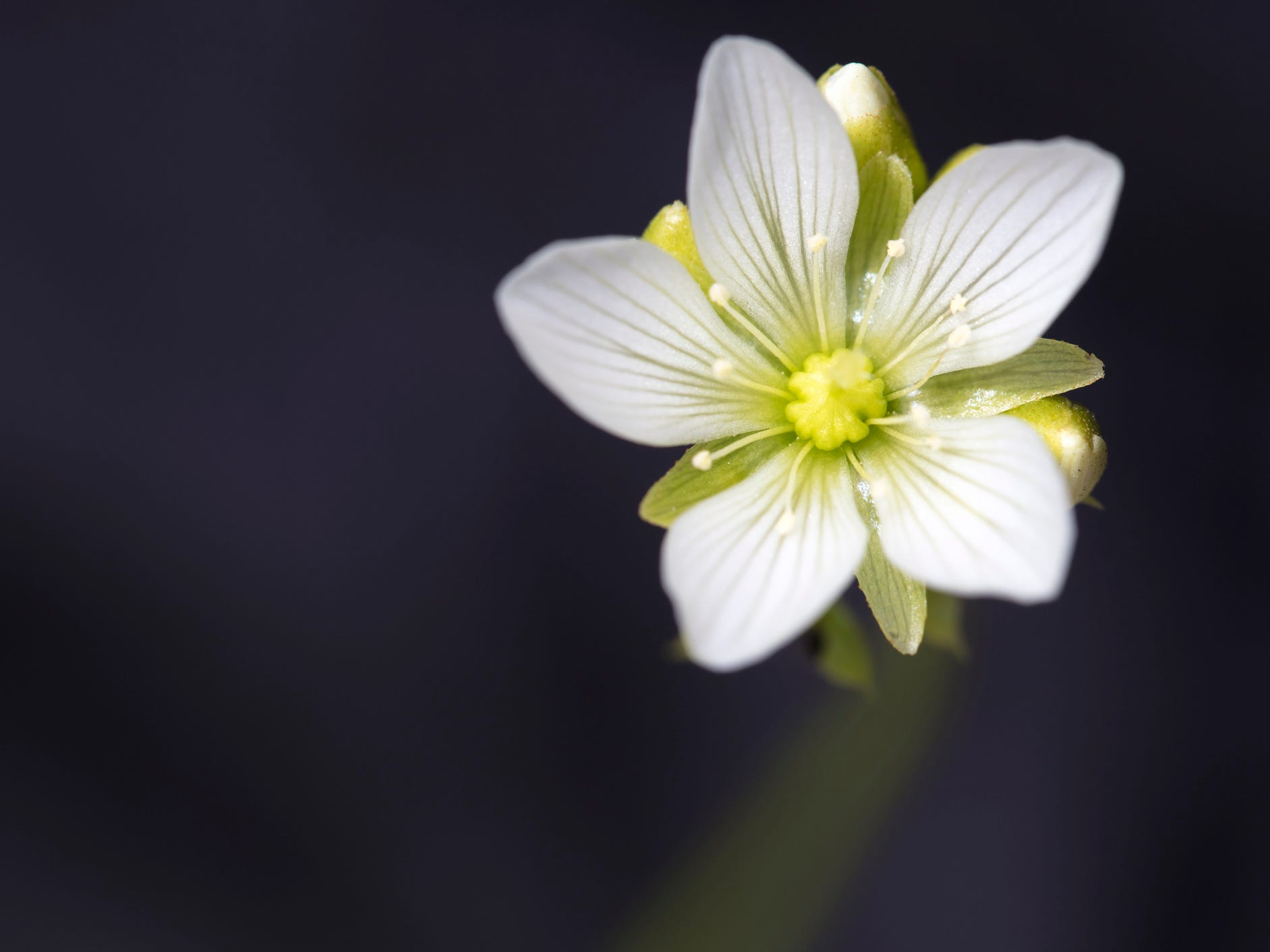
Malisa Nicolau/Getty Images
It's a lesser-known fact that Venus flytraps bloom small white flowers year after year. Letting a Venus flytrap flower can exhaust the plant, becoming sluggish and droopy once the flowers have bloomed.
"If you have a larger flytrap, you can let it flower. If it is smaller than three inches or so, I recommend pinching off the flowers before they get tall," says Ribbecke. "Flowering usually diverts energy from making the traps, so unless you want to propagate your plant from seeds, focus on more plentiful traps by trimming the flowers."
Insider's takeaway
Venus flytraps may have an unusual look and reputation, but they are fun and easy to care for carnivorous plants. With consistent moisture, nutrient-poor soil, full sun, and access to the right insects and arachnids, your Venus flytrap can become a special and distinct addition to your plant family.
